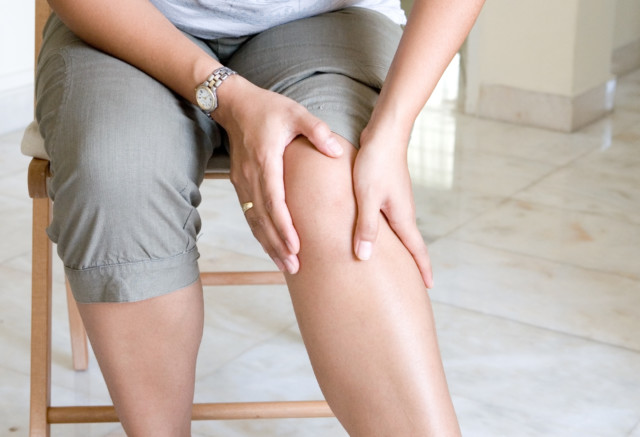Joint injury increases the risk of knee osteoarthritis
Where risk factors have been identified in knee and hip osteoarthritis (OA), with few exceptions, no prevention strategies have proven beneficial.

Charles R. Ratzlaff, Matthew H Liang, Arthritis Research & Therapy August 31, 2010
The major risk factors for knee OA are advanced age, injury and obesity. However, there is limited or no evidence that they are modifiable or to what degree modifying them is effective in preventing development of knee OA or in preventing symptoms and progressive disease in persons with early OA. The notable exception is the growing epidemic of (sports) injury related knee OA.
This review details the biological and clinical data indicating the efficacy of interventions targeting neuromuscular and biomechanical factors that make this subset of OA an attractive public health target, and highlights research opportunities for the future.
| Introduction |
Osteoarthritis, OA is the most important rheumatic disease affecting mankind. Where risk factors have been identified, such as in knee and hip OA, with few exceptions, no prevention strategies are well substantiated enough or have proven benefit to justify widespread dissemination. The major risk factors for knee OA are advanced age, injury and obesity.
However, there is limited or no evidence that they are modifiable or to what degree modifying them is effective or what this would cost in primary prevention (avoiding development of knee OA) or secondary prevention (detecting knee OA early to treat to prevent symptoms and progressive disease).
The notable exception is the growing epidemic of (sports) injury related knee OA. The purpose of this review is to detail the biological and clinical data that make this subset of OA an attractive public health target.
| This article is part of a review series on New developments in osteoarthritis, edited by Martin Lotz and Stefan Lohmander. |
Source Arthritis Research & Therapy
| References |
New developments in osteoarthritis. Prevention of injury-related knee osteoarthritis: opportunities for the primary and secondary prevention of knee osteoarthritis, Ratzlaff CR, Liang MH. Arthritis Res Ther. 2010;12(4):215. doi: 10.1186/ar3113. Epub 2010 Aug 31. Full text
| Further reading |
Early-stage symptomatic osteoarthritis of the knee – time for action, Mahmoudian A, Lohmander LS, Mobasheri A, Englund M, Luyten FP. Nat Rev Rheumatol. 2021 Oct;17(10):621-632. doi: 10.1038/s41584-021-00673-4. Epub 2021 Aug 31.
Is Participation in Certain Sports Associated With Knee Osteoarthritis? A Systematic Review, Driban JB, Hootman JM, Sitler MR, Harris KP, Cattano NM. J Athl Train. 2017 Jun 2;52(6):497-506. doi: 10.4085/1062-6050-50.2.08. Epub 2015 Jan 9. Full text
Is physical activity, practiced as recommended for health benefit, a risk factor for osteoarthritis? Lefèvre-Colau MM, Nguyen C, Haddad R, Delamarche P, Paris G, Palazzo C, Poiraudeau S, Rannou F, Roren A. Ann Phys Rehabil Med. 2016 Jun;59(3):196-206. doi: 10.1016/j.rehab.2016.02.007. Epub 2016 Apr 18
Annual Incidence of Knee Symptoms and Four Knee Osteoarthritis Outcomes in the Johnston County Osteoarthritis Project, Murphy LB, Moss S, Do BT, Helmick CG, Schwartz TA, Barbour KE, Renner J, Kalsbeek W, Jordan JM. Arthritis Care Res (Hoboken). 2016 Jan;68(1):55-65. doi: 10.1002/acr.22641. Full text
Strategies for the prevention of knee osteoarthritis, Roos EM, Arden NK. Nat Rev Rheumatol. 2016 Feb;12(2):92-101. doi: 10.1038/nrrheum.2015.135. Epub 2015 Oct 6. Full text
